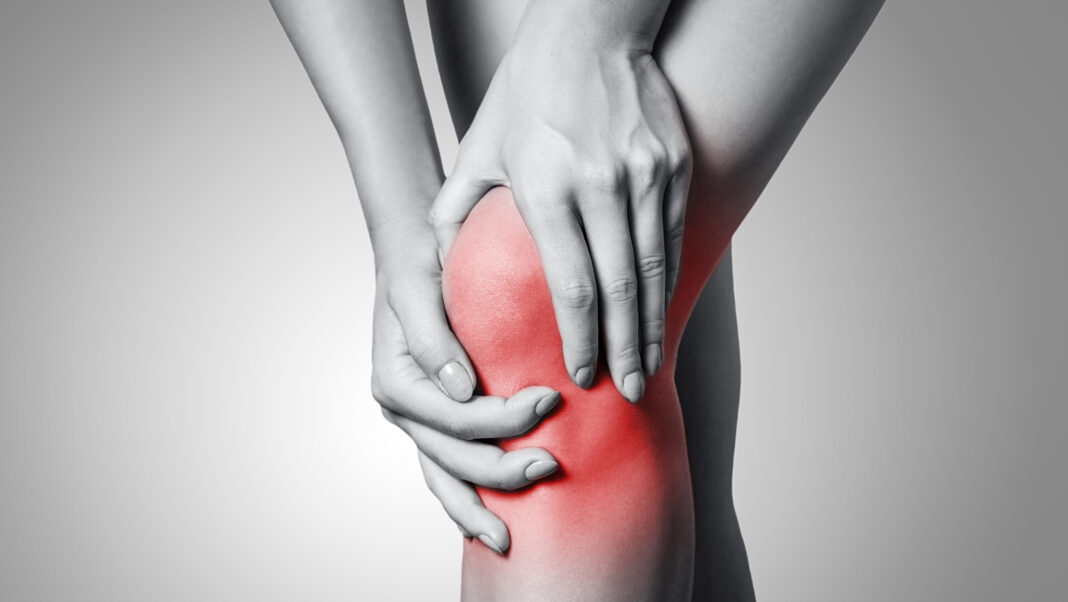Jim Manson discovers that maintaining strong bones and supple joints – thus avoiding becoming an NHS statistic – means playing the long game by supplementing early, way before the aches and pains kick in
Many of us give barely a thought to musculoskeletal matters when we’re young. Bones and joints? We’re far too busy living life to be worrying about that sort of thing, thank you very much. And then it happens. That occasional post-run twinge becomes more of regular niggle. Or we’re at the doctors and mention an achy hip, to be told “I’m afraid that’s probably wear and tear,” at which point we officially become part of a truly eye-watering set of statistics.
In Britain, eight million people (or one in eight adults of working age) live with some form of musculoskeletal condition. One in five of us will consult a GP in any one year about a bone or joint condition, with 30.8 million working days being lost due to these conditions. And the healthcare costs associated with dealing with them are enormous – osteoarthritis and rheumatoid arthritis alone are costing the NHS about £10.2 billion annually.
One positive development amongst all of this is that awareness about bone and joint health is growing quickly. A health topic that even NHS specialists admitted as recently as 2018 was the ‘elephant in the room’ is now much more widely discussed and understood in both a professional setting and, increasingly, among health-aware consumers. With that has come an appreciation of the benefits of prevention, and the impacts on bone and joint health experienced during different life stages.
Market factors
An ageing society, combined with healthier lifestyle goals, is seriously boosting the
market for bone and joint health-boosting ingredients. A recent report from Frost & Sullivan predicts that the worldwide bone and joint health ingredients market is likely to soar from $3.73 billion (£3.12 billion) in 2021 to $6.01 billion (£5.02 billion) by 2030. With growing awareness among consumers around the need to maintain their general mobility, Frost & Sullivan predicts ‘lucrative opportunities’ for businesses who invest in R&D in this area, particularly in ‘clinically backed, natural ingredients that address multiple issues simultaneously’. This, in turn, creates a substantial opportunity for the natural health sector, at both brand and retailer levels, especially if they are able to capture the widening demographic for bone and health products.
A changing demographic
Joanne Hill of Amaranth and Vicky Perks of Beanfreaks are two health food retailers who have observed a significant change in the demographic when it comes to joint health product sales. “If I go back ten years to when I was first active on the shop floor here, we saw a lot of mainly older customers with issues such as osteoarthritis. And those people were typically coming in looking for things like glucosamine and chondroitin. Today, the picture is quite different. I’d say that the single biggest demographic is women in their forties and fifties, approaching the menopause and either experiencing, or being aware of, the joint pain associated with that time of life,” Hill says.
Perks has also seen a drop in age of the typical joint health customer. “I’ve seen my demographic in the city centre stores come down considerably over the years and now it is probably averaging out at around 25 to 35. A lot of people are coming in looking for joint repair and injury repair.” The level of interest is heightened, she says, because Cardiff – where the Beanfreaks stores are located – is a major sports hub. “It’s not just the rugby, this is a city of runners and elite athletes.”
New approaches
Both retailers agree that the traditional mainstays of the natural joint health category – such as glucosamine, chondroitin and omega-3 fish oil – remain firmly in place. But in recent years they have seen other ingredients and approaches growing in popularity with customers. Collagen, curcumin, hyaluronic acid and CBD are notably on the up. Increasingly, people are taking their cue from influencers and social media. Here’s Perks again: “We’re getting a lot more health-savvy customers coming in. Often, the information they are getting is from TikTok. That’s where a lot of the interest in CBD is coming from – people have seen TV celebrities or influencers talking about it enthusiastically. And, increasingly, the research is there in terms of support for CBD use with joint complaints.” Beanfreaks’ younger customers are also increasingly looking for vegan alternatives, Perks adds. “There are a lot of vegan athletes and bodybuilders out there now.”
“I’d say that the single biggest demographic is women in their forties and fifties, approaching the menopause”
Sometimes retailers will need to manage customers’ expectations, Perks suggests. “You’ve got a lot of options now, but it does come down to the question ‘What is the right approach for the person that you’re dealing with?’. For example, collagen is newer to the market, and there’s a lot of interest in it, but it might not be the best route for a particular customer.”
Playing the long game
Given that supplemental approaches to joint pain and mobility often require time and persistence before benefits are achieved, it’s not surprising to hear Hill reveal that the question she is most frequently asked is ‘How long will it take to feel the effects?’. “It’s a really difficult question to answer because it will vary with the type of supplement and the individual person. It’s true that there is now quite a lot of research to indicate how long effects will take to achieve, and what are the optimum dosages, but the effects will still vary from person to person. I think this is one of the reasons that people have been turning more to turmeric and CBD, where they’ve been led to expect more of an immediate pain-relieving benefit. Quite often customers report to us that with these products they are feeling benefits within a month of starting them, which of course incentivizes them to keep taking them.”
Hill says that there is an added challenge with selling products ‘like glucosamine and chondroitin, which work at a deeper level’. “With these products there are particular benefits when supplementation begins early. We know that selling the idea of prevention is often difficult, so that’s why we ensure our staff have in-store access to research and information to support our advice.”
Perfect natural partners
As knowledge about the development and staging of bone and joint conditions builds, the opportunity for more precise ‘pairing’ of products and condition stages is growing. Discuss-ing this, Tim Gaunt, head of research and development at Natures Aid, says: “It’s really helpful to know which nutrients to target at the different stages of osteoarthritis to get the biggest benefit. We know that osteoarthritis progresses with age, and that’s particularly the case if we don’t take any action early on.
“I would really consider glucosamine during the early stage of osteoarthritis, even for people who are not experiencing any joint pain. For example, those younger customers who come in store saying ‘I want to do something to support my joints in later life’. In general, I would recommend a combination of approaches and products through the various stages of osteoarthritis.”
Gaunt suggests glucosamine and chondroitin as ‘perfect partners’ with stages 1-2 (mild) of the condition. These two ‘proteoglycans’ form GAGs, molecules that are of primary importance as the building blocks in the growth of healthy new cartilage. With stages 2-3 (mild-moderate) osteoarthritis, he recommends glucosamine, MSM and chondroitin in combination for those who have some degree of joint pain and may be experiencing prolonged discomfort. MSM and chondroitin have beneficial effects on joint structures, while chondroitin contributes to the ‘springiness’ of cartilage-rich tissues. MSM additionally helps to support multi-directional resistance to loads and acts as an anti-inflammatory. With stages 3-4 (moderate) – when reversing loss of sulphur and relief from pain are the most urgent needs – Gaunt recommends adding turmeric to the mix. Here, MSM should serve as a valuable nutrient and anti-inflammatory. MSM also plays important roles in detoxifying cells by increasing the permeability of cell membranes, reducing pain and inflammation. Turmeric also provides much needed anti-inflammatory effects. Unfortunately, by the time stage 5 is reached, the surgeon’s knife is often the only course of effective action, which, says Gaunt, is probably the best argument for preventative action that there is.
Menopause and joint pain: what’s going on?
Until recently, joint pain was one of the lesser known health concerns associated with the menopause. But that seems to be changing. As retailer Joanne Hill of Amaranth comments: “I did a talk recently on the menopause and I gave everyone an online survey to fill in before. I provided a list of menopause symptoms and asked people to tick ones they were experiencing themselves. The one that scored the highest was actually joint problems. So it’s very clear that a lot of people in the group are looking at ways to improve flexibility, and manage and reduce pain.”
So, how and why does the menopause produce joint pain? Oestrogen affects cartilage, the connective tissue in joints, as well as bone turnover (the natural replacement of bone in your body), so it can play a part in inflammation and pain. During menopause, women can be more likely to get osteoarthritis (particularly in the hands) and possibly rheumatoid arthritis making joints swollen, stiff and painful. And it’s not just new aches and stiffness that may be experienced during menopause; old injuries from years ago that used to cause pain can flare up again in the menopause.
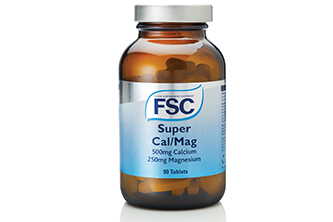 FSC Super Cal/Mag
FSC Super Cal/Mag
FSC
Tel: 0800 0830356
E-mail: [email protected]
www.fscsupplements.com
Calcium is needed to develop and maintain healthy bones and teeth and is an important factor in reducing the rate of age-related bone loss. It is also essential for cellular growth, blood clotting, nerve impulse transmission and muscular function. Calcium can compete with magnesium for absorption, so supplemental magnesium is added. Magnesium in association with Calcium is important for bone structure and strength, and for keeping calcium soluble. It is also needed for muscle relaxation and for growth.
Suitable for Vegetarians with no artificial flavours or preservatives. It is recommended to take one tablet daily with food. Available in 30 and 90 tablet glass bottles.
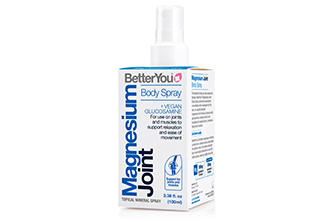 Magnesium Joint Body Spray
Magnesium Joint Body Spray
BetterYou
Tel: 01226 814030
E-mail: [email protected]
www.betteryou.com
BetterYou Magnesium Joint Body Spray is formulated to relieve muscle stiffness and improve joint flexibility, enhanced with vegan glucosamine for direct muscle and joint application with the cooling effect of menthol and eucalyptus oil. 10 sprays deliver 100mg of magnesium and 50mg of glucosamine. Certified vegan and palm oil free and contained in packaging made from carbon-negative, plant based plastic – 100% recyclable. RRP 13.95
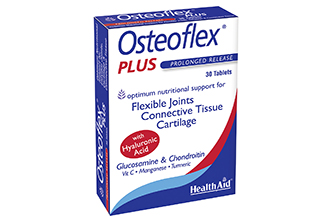 OsteoflexPlus
OsteoflexPlus
HealthAid Ltd
Tel: 020 8426 3400
E-mail: [email protected]
www.HealthAid.co.uk
Osteoflex® Plus – Keeping you Flexible – Osteoflex®Plus tablets, an optimum formulation providing a combination of Glucosamine and Chondroitin, which helps the body repair damaged cartilage and lubricate the joints. Vitamin C and Turmeric are incorporated in the formula for their powerful anti-inflammatory properties. Osteoflex® Plus has the added benefit of Hyaluronic Acid, helps to improve joint health – especially cushioning of the joints and to improve the quality of synovial fluid that acts as a lubricant, shock absorber and helps to maintain the structural and functional characteristics of the cartilage matrix.
Osteoflex® Plus retails at £20.99 for 30 tablets. Contact HealthAid Ltd on 0208 426 3400 for purchase and stockist information or visit www.healthaid.co.uk
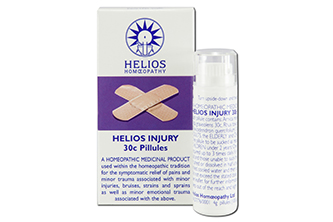 Helios Injury
Helios Injury
HELIOS HOMEOPATHY LTD
Tel: 01892 511555
E-mail: [email protected]
www.helios.co.uk
Helios Injury contains three homeopathic remedies Arnica, Rhus tox and Ruta grav. This combination has a long history of traditional use to relieve pain from trauma, associated with minor injuries, bruises, strains and sprains, or pain and stiffness from arthritic/rheumatic complaints. Injury is one of five award winning combination remedies from Helios covering Childhood teething, fevers and earache, Hay Fever, Sleep and Stress Relief. The remedies come in lactose free, organic sucrose pill form in our easy-to-use single-dose dispenser.
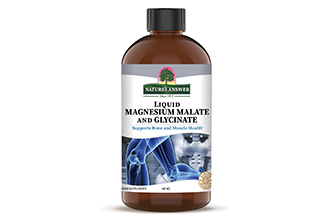 Nature’s Answer Liquid Magnesium Glycinate
Nature’s Answer Liquid Magnesium Glycinate
Kinetic Natural Products Distributor
Tel: 08450 725 825
E-mail: [email protected]
www.kinetic4health.co.uk
Nature’s Answer Magnesium Malate & Glycinate combines these two ‘gentle’ forms of magnesium that are amino acid chelates, offering a more bioavailable form of magnesium in liquid supplement, absorbed faster than pills, capsules and softgels. Suspended in vegetarian glycerin for better intra-cellular absorption, with a delicious natural tangerine flavour, and also featuring a unique botanical blend, Quicksorb, for better assimilation from the intestinal tract plus liver metabolism. Nature’s Answer produce high-quality natural products for vital, healthy lifestyles since 1972. Their facility is cGMP Certified, organic and kosher certified.
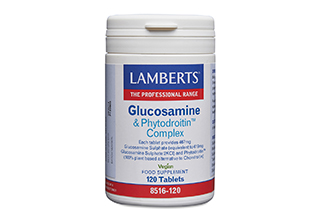 Glucosamine & Phytodroitin™ Complex
Glucosamine & Phytodroitin™ Complex
Lamberts Healthcare Ltd
Tel: 01892 554313
E-mail: [email protected]
www.lambertshealthcare.co.uk
Glucosamine is a well-known ingredient helping to maintain healthy joints and muscles in the body. Lamberts Glucosamine & Phytodroitin™ Complex utilises GlucosaGreen® – the world’s first commercially available glucosamine produced by a revolutionary direct-fermentation process. Bioequivalent to shellfish-derived glucosamine, GlucosaGreen® is vegan-friendly (made from no-GMO corn). Combined with Phytodroitin™ – a plant-origin alternative to chondroitin, manufactured from seaweed extracts and providing the nutrients at the levels used in clinical studies. Additionally, this product addresses the many challenges inherent to chitin-derived shellfish production, such as: raw material availability, allergen concerns and the environmental pollution caused by extracting chitin from shellfish.
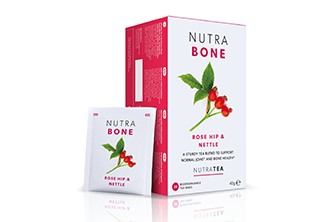 NutraBone – Herbal Tea For Joint & Bone Health
NutraBone – Herbal Tea For Joint & Bone Health
NutraTea
Tel: 020 3146 7150
E-mail: [email protected]
www.nutratea.co.uk
NutraBone® by NutraTea® is 1 of 24 unique functional herbal teas that have been expertly blended to help strengthen bones and manage inflammatory responses. This complete herbal blend contains 100% active botanicals that have been sustainably sourced including Ginkgo Biloba, Turmeric and Devil’s Claw to help strengthen the body’s locomotor system and maintain healthy bones. Each biodegradable tea bag is free from flavourings, oils and excipients allowing it to be reused throughout the day for a convenient way to contribute to joint health and help maintain flexible joints, muscles, and tendons.
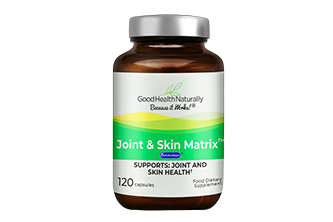 Joint & Skin Matrix™
Joint & Skin Matrix™
Wholesale Health Ltd
Tel: 01606 889905
E-mail: [email protected]
www.wholesalehealthltd.co.uk
Good Health Naturally’s Joint & Skin Matrix™ uses clinically studied BioCell Collagen® for optimum absorption and utilisation in skin and joints. BioCell Collagen® is composed of naturally occurring hydrolysed collagen type II peptides, chondroitin sulfate, and hyaluronic acid. Its unique matrix is not a blend of individual ingredients. BioCell Collagen® promotes healthy connective tissues, including active and flexible joints and youthful-looking skin. Various studies, including seven human clinical trials, support its safety, efficacy and bioavailability. BioCell Collagen® utilises a patented Bio-Optimization™ process, which ensures excellent bioavailability and rapid absorption into the body. 120 capsules (approx. 30 servings).
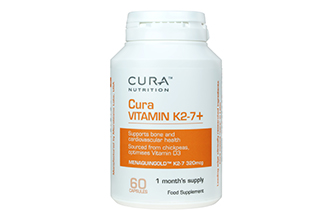 Cura Vitamin K2-7+
Cura Vitamin K2-7+
Cura Nutrition Ltd
Tel: 0845 528 1296
www.curanutrition.com
Cura Vitamin K2-7+ is the first vitamin K2 supplement available in the UK retail market to use the pharmaceutical grade MenaQuinGold® K2-7 ingredient. This Cura Nutrition formulation has been created to include a therapeutic dose of 320 mcg of vitamin K2-7, plus 200 mcg of Vitamin K1 and the necessary co-factors, magnesium and zinc to allow these K vitamins to function at their optimal level. The primary role of vitamin K2 is to activate vitamin K-dependent proteins (VKDPs) so they can perform essential functions in the body, such as supporting bone production, cardiovascular health, energy production and brain health.


